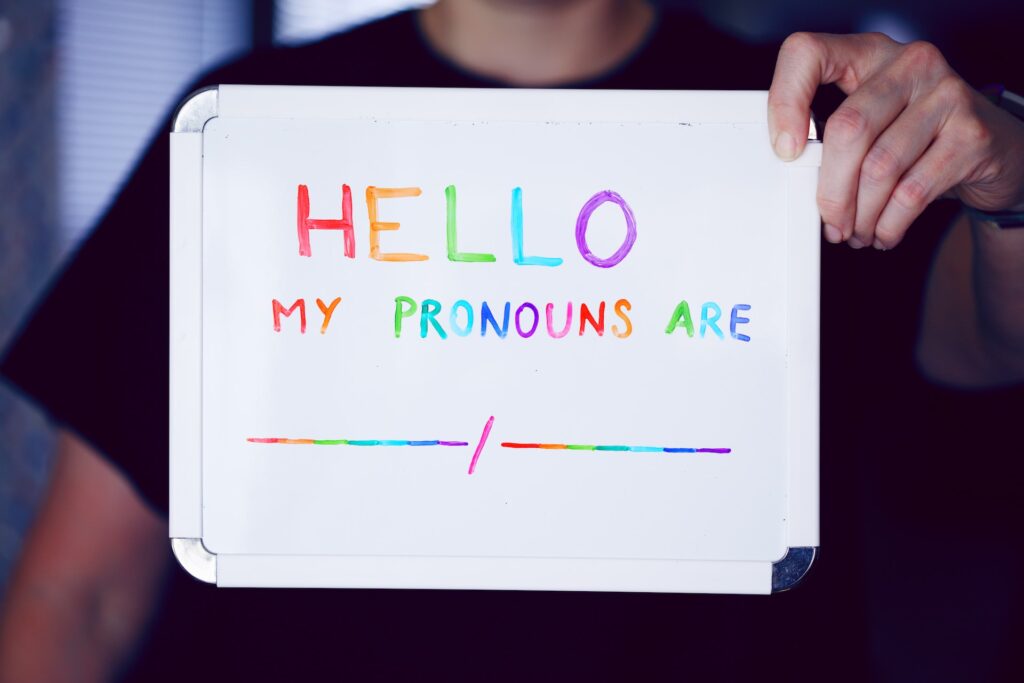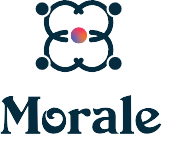Using gender pronouns respectfully is an essential step in creating an inclusive environment. It helps everyone feel seen and respected for who they are.
Creating a sense of belonging and inclusivity is paramount in our diverse and constantly changing world. A practical approach to achieving this is ensuring everyone feels acknowledged and valued through respectful recognition and gender pronouns.
Using someone’s pronouns respectfully can empower people who identify beyond the limitations of the gender binary. It allows them to freely express their authentic identity and engage in social interactions confidently and authentically.
Misgendering someone, whether it’s intentional or not, can be harmful. It only adds to the discrimination and stigma that transgender and non-binary people already face.
But when we try to use the correct pronouns, we’re taking a stand against these harmful attitudes and working to break down the barriers that hold back progress for these communities.
Using the correct gender pronouns also can profoundly impact a person’s mental health and well-being. When someone is consistently misgendered, it can lead to feelings of invalidation, dysphoria and increased stress.
By recognising and using the correct pronouns, we create a supportive environment that respects and values individuals’ identities, positively influencing their emotional and psychological state.
Here are some ways to openly use and discuss gender pronouns. These approaches can empower people to be true to themselves and contribute to a more welcoming and understanding community.
Avoid assumptions based on appearance
Making assumptions based on appearance perpetuates stereotypes. It also restricts the diversity of gender identities because gender expression and presentation vary significantly among people.
When we reject these assumptions, we push back against society’s biases and expectations about gender. This mindset creates more opportunities for everyone to feel accepted and included, regardless of how they express themselves.
You can politely ask what pronouns they prefer if you are unsure. Asking simple questions such as, “What pronouns do you use?” or “Can you tell me your preferred pronouns?” is a good start to creating an inclusive and respectful space.
Use gender-inclusive language
When we use language inclusive of all genders, we contribute to promoting social change. This kind of language acknowledges and supports the experiences of transgender, non-binary, and gender-nonconforming people.
When we incorporate gender-inclusive language into our communication, we actively strive to ensure that our words and expressions consider all gender identities. This approach also minimises accidentally misgendering someone and causing discomfort or harm.
Here are some examples of gender-inclusive language:
- Instead of saying, “ladies and gentlemen,” you can say, “everyone,” “folks” or “people.”
- Instead of assuming someone’s marital status based on gender, you can use gender-neutral terms like “partner,” significant other,” or “spouse.” For example, instead of asking a woman, “Is your husband joining us?” you can ask, “Is your partner joining us?”
- You can use gender-neutral terms instead of using gendered language to describe professions. For example, instead of saying “fireman,” you can say “firefighter,” and instead of saying “stewardess,” you can say “flight attendant.”
Practice using people’s correct pronouns
When we practise using the correct pronouns for people, we set an example to encourage others to support allyship. Our efforts to show respect and inclusivity for individuals’ gender identities can inspire others to do the same. As this attitude spreads, it can create a more supportive and accepting community where everyone feels empowered to use and respect gender pronouns.
Correct pronouns are essential to advancing social justice and equality for non-binary and transgender people. This practice helps combat institutionalised discrimination and reinforces the idea that everyone, regardless of gender identity, deserves equal respect, rights and opportunities.
Here are some tips for correctly using people’s preferred pronouns.
- If you find it difficult to remember someone’s preferred pronouns, you can try linking their pronouns to their name or forming a mental image of them in your head.
- If you notice someone being referred to using incorrect pronouns, correcting the person responsibly and gently can be helpful. For instance, if someone uses the wrong pronouns for a colleague, you could politely interject with something like, “I believe John uses he/him pronouns.”
- If you frequently communicate through written channels such as emails or messaging apps, it is paramount to use the appropriate pronouns when referring to someone consciously.
- Learning and adjusting to new pronouns can take time, especially if you are not accustomed to them. Be patient with yourself as you navigate this learning process and remember that making errors is acceptable as long as you are dedicated to rectifying them.
Educate others
Many likely do not fully grasp the importance of gender pronouns and the harm that can result from using the wrong ones. However, by sharing information and educating others, we can help to increase awareness about the significance of using the correct pronouns and avoiding misgendering.
When we teach others about gender inclusivity, we play a role in establishing environments that recognise and honour the identities of all individuals. This approach can lead to improved mental health, greater well-being, and increased participation in social settings, as people feel appreciated and validated for who they are.
Raising awareness about the experiences and identities of underrepresented groups is essential in breaking down the obstacles they encounter in different aspects of life, including education, employment and healthcare. Educating people can promote empathy, comprehension and inclusivity, all contributing to a more equitable and fair society.
Encourage pronoun sharing
When sharing pronouns becomes a customary practice, it helps to establish the use of gender pronouns as a regular aspect of communication. This method helps to decrease any stigma or discomfort that may arise from disclosing one’s pronouns, making it more comfortable for everyone to communicate their preferences.
Inviting people to share their pronouns is also a way to show that you recognise and honour their gender identity and respect their right to choose how they are referred to.
When you serve as role models by consistently encouraging using gender pronouns respectfully, you can motivate others to follow suit. You also can generate a ripple effect that promotes greater acceptance and understanding by fostering a culture of inclusivity and respect.
Acknowledging and honouring gender pronouns is becoming legal in numerous jurisdictions such as Ontario, British Columbia, California and New York City. Promoting the sharing of pronouns goes a long way toward adherence to these legal requirements and cultivating an inclusive culture that upholds the rights of individuals.











